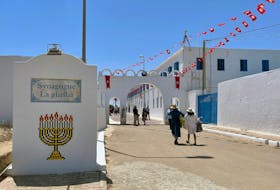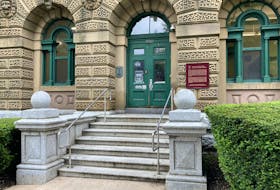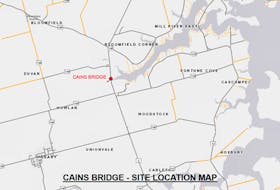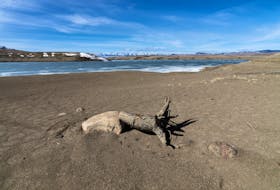SYDNEY, N.S. — Call it a case of well-intentioned humans protecting nature from the well-intentioned actions of other humans.
The latter are the decision-makers behind the plan to construct a flood mitigation berm that touches on the footprint of south end Sydney’s popular Baille Ard Trail. The former are the volunteers and partners determined to ensure that as little growth as possible is destroyed or lost as a result of the mitigation project.
But let’s be clear: the two groups are not in conflict. In fact, Baille Ard Recreation Association’s David Gabriel said he’s extremely pleased with the collaboration between his non-profit group and its environmental partners, and the Cape Breton Regional Municipality and CBCL, the engineering firm tasked with designing and constructing the mitigation berms.

“We are very heartened by the fact that CBCL and CBRM listened to our concerns – a small number of trees will be lost but the situation could have been much worse,” said Gabriel, referring to the municipality’s preliminary plans for the mitigation project that were revised in February.
The initial design called for a series of collection ponds cutting right across the Baille Ard forest and trail system. In fact, that option, which came from a consultant-conducted flood risk assessment that was later endorsed by CBRM council, included the establishment of what is referred to as Pond 5, a man-made catchment basin, and the construction of six earthen berms that would have crossed the trail system at 11 different points. The original concept would have disturbed 360 metres of trail, while the new plan will only affect 12 metres of trail.
But it’s an important 12 metres of trail, according to Jenn Cooper. She's the project manager with ACAP Cape Breton, a local non-profit environmental agency that has partnered with the Baille Ard group and other stakeholders to save as much of the forest as possible from the consequences of the berm construction.

And now, there is a plan of action. A plant rescue is now in the works.
“We’re going to remove any plants that are worth saving and try to help them survive long enough to get planted back in or get relocated somewhere else on the trail,” said Cooper, of the volunteer initiative that has twice been delayed due to the weather.
“But it’s not just the plants that we are hoping to rescue, there are so many logs and rotting deadwood that are home to a huge diversity of fungi species, so relocating logs is just as important and we’re hoping to preserve as much as what’s there are possible because the forest is a whole thing and there is as much going on underground as above ground.”
Cooper added that the plant rescue is still on the agenda as berm construction is expected to start soon.
“It may look like an outdoor, community, socially-distanced event where we ask volunteers to help dig up shrubs and put them in pots or relocate them somewhere else along the trail,” she said.
For his part, Gabriel noted that local Mi’kmaq are also involved as they hold great interest in plants with which they have long been acquainted with in regard to nature-based medicines.

He added that the trees that are felled for the mitigation project will be collected so they can be utilized at a later time.
“The large, mature trees that are felled should be saved for use on the trail system for when we are building bridges, shoring up the trail, working on the banks of the streams or creating natural play areas for children and students, we can use that wood,” said Gabriel.
Calls for flood mitigation measures intensified following the Thanksgiving Day floods of 2016 that devastated property and infrastructure in the low-lying south end Sydney area around the waterway known as the Washbrook.








